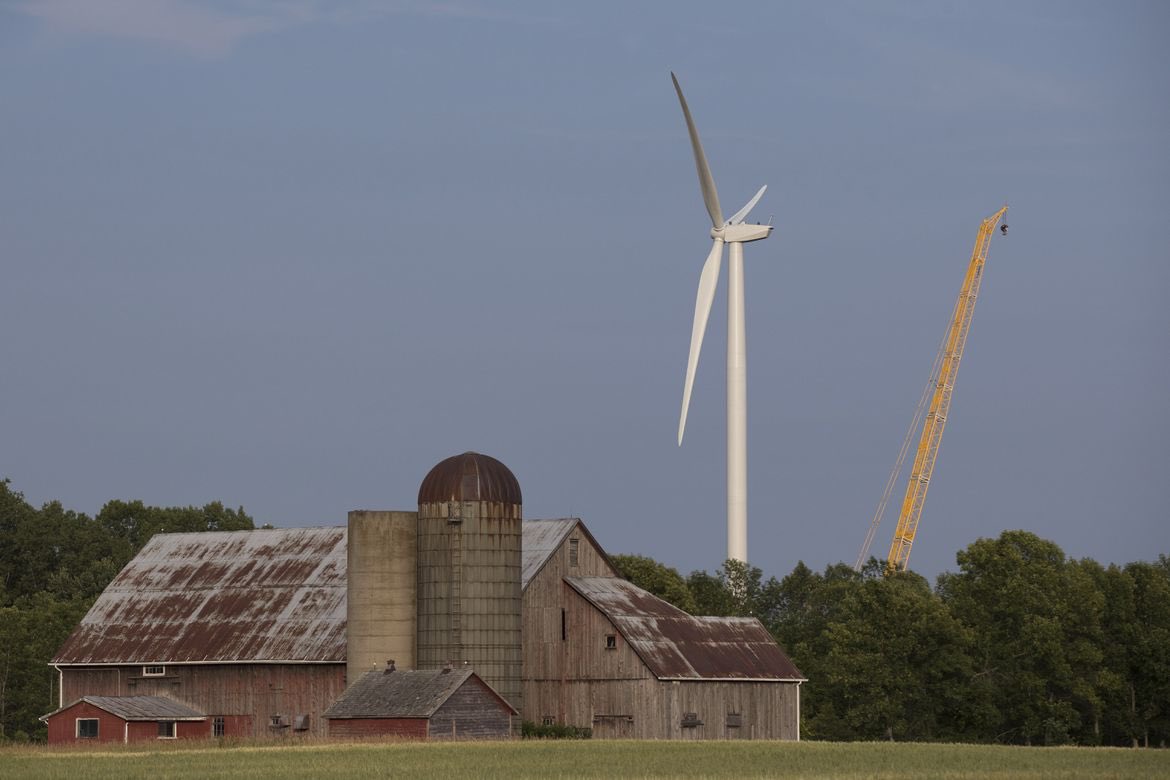
Ontario has announced it will invest more in wind and solar power generation to meet local energy demand in the coming decades.
On Monday, Energy Minister Todd Smith said the province would look into the viability of ‘green energy’ infrastructure. If approved, he hopes to complete their construction by 2050 to achieve a “100% clean grid.”
“Hopefully, the federal government can get on board with our intentions to build this clean generation as quickly as possible,” said Smith, adding they hope to lessen their dependence on natural gas moving forward.
However, he admitted that natural gas is still needed when renewable energy is not available, given it generates about 10% of the province’s electricity.
Ontario’s Tory government also said it would keep its nuclear power plants open, which provide the province with nearly 60% of its electricity.
SecondStreet.org raised questions about the dependability of wind and solar power as an energy alternative throughout the year.
Over the past several months, neighbouring Alberta observed its wind turbines nearly ground to a halt twice owing to frigid winter weather conditions.
On April 4, Pipeline Online reported the province’s energy output from wind plummeted to 0.8% capacity, with 29 MW generated just after midnight.
On February 23, extreme cold weather nearly slowed wind farms across the province, tanking to between 11 and 20 megawatts (0.3%) with 31 turbines not operational.
“At this point, the business case behind using solar and wind power is often very weak because these two sources of power are often unreliable — the sun doesn’t always shine, and the wind doesn’t always blow,” said SecondStreet.org president Colin Craig.
Wind is at 0.4% of capacity and produces 0.1% of total generation, while solar is at 33.2% of capacity and 3.61% of total generation. At the same time, we are importing 811 MW or 7%,” said Reliable AB Energy, which tracks Alberta’s energy grid.”
Alberta wind farms can produce 3,618 megawatts at total capacity but dwindle during winter. Below -30°C, wind turbines hibernate and are susceptible to breaking.
Despite their unreliability, TransAlta Corporation intends to build another wind power plant in Cardston County with up to 50 operational turbines.
Smith’s announcement aligns with the federal government’s upcoming Clean Electricity Regulations, which seeks to transition conventional energy production to wind and solar energy.
Federal Environment Minister Steven Guilbeault recently threatened consequences for provinces not adopting the Clean Electricity Standard by 2030.
Alberta refuted those standards, as they would leave billions in stranded costs on the backs of ratepayers.
On June 8, Alberta Premier Danielle Smith said while the province’s electricity grid of tomorrow will use a mix of energy, it is “not achievable” to expect the province to replace its reliance on natural gas within 12 years.
She emphasized each province has a different energy mix.
“In Alberta, 90% of our electricity grid comes from natural gas, so you can’t use the same lens here…like in Quebec, where they get the lion’s share from hydro or nuclear,” said the premier.
In contrast, Saskatchewan relies on a mix of natural gas and coal power to meet local electricity demand.
However, Saskatchewan’s energy regulator SaskPower seeks to expand its solar and wind energy capacity by 3,000 MW.
“If the Saskatchewan government is looking at solar and wind power to reduce emissions, then building more ties with Manitoba might make sense as the latter has access to relatively clean hydropower,” said Craig.
“Alternatively, small modular nuclear reactors are another exciting clean energy source coming on stream. There may be ways the Saskatchewan government could cut red tape to help speed development of the latter up.”
In Alberta, the proposed Riplinger Wind Power Project is expected to receive approval sometime in 2024 from the Alberta Utilities Commission (AUC), with the facility coming online in late 2025.
Rebel News asked Smith if she would consider keeping Alberta’s coal plants open past 2023 to keep electricity costs down for residents. She said they are slated to be decommissioned by year’s end — seven years before the federal government timeline.








